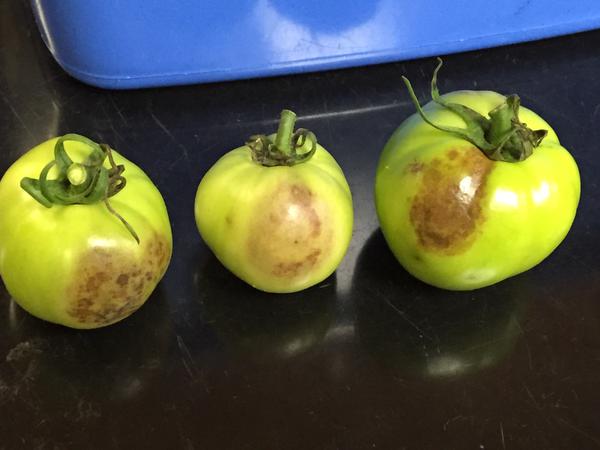


'Plum Regal', 'Defiant', and 'Iron Lady' also appear to have resistance to late blight. Tomato varieties Mountain Magic, Wapsipinicon Peach, Matt's Wild Cherry, and Pruden's Purple had high levels of resistance to multiple races of the late blight pathogen in trials conducted by University of Wisconsin-Madison while the variety, Legend, developed by OSU, was resistant to one race of the three pathogen races tested.Space, stake, and prune tomato plants to provide good air circulation.Avoid wetting foliage when irrigating, especially in late afternoon and evening.Infected tomato refuse should be buried or bagged and put in the trash. Do not let volunteers grow, even on compost piles. Destroy volunteer tomatoes and potatoes routinely by cultivation or herbicides.If starting transplants from seed, air-dry freshly harvested seed at least 3 days.
Tomatoes resistant to late blight free#
Check to make sure plants are free of dark lesions on leaves or stems. Plant only healthy-appearing tomato transplants.However, the following measures will improve your chances of raising a successful crop. On ripe fruit, lesions have cream-colored concentric zones, which eventually coalesce and affect the entire fruit.Ĭultural control Cultural controls alone won't prevent disease during seasons with wet, cool weather. If conditions remain moist, abundant white mold will develop on the lesions, and secondary soft-rot bacteria may follow, resulting in a slimy wet rot of the entire fruit. On green fruit, gray-green water-soaked spots form, enlarge, coalesce, and darken, resulting in large, firm, brown, leathery-appearing lesions. In dry weather, infected leaf tissues quickly dry up, and the white mold disappears. During periods of high humidity and leaf wetness, a cottony white mold usually is visible on lower leaf surfaces at the edges of lesions. Lesions can girdle affected stems, killing foliage farther out. Under cool, moist conditions, spots rapidly enlarge to form purplish black lesions. Symptoms Lesions start as irregular, greenish, water-soaked spots on leaves, petioles, and/or stems. Chemical control, initiated before disease begins, is the only method that can prevent complete crop destruction. infestans to slow disease development, and once disease begins, cultural controls may fail to slow its development. No commercial varieties have sufficient resistance to P. Rainy weather, fog, and dew are favorable for late blight. Infected stems can harbor the pathogen in dry weather, enabling sporulation and late-blight spread when wetter conditions return. Cool, wet weather favors disease development hot, dry weather checks it. Late blight of tomato is a disease that progresses very rapidly. Many have been associated with new strains of the late-blight microbe. Since 1990, there have been severe outbreaks of late blight in commercial and home garden plantings of potato and tomato in both the United States and Canada. It is a common problem west of the Cascade Range. Occasionally peppers and eggplants are mildly infected, as are a few related weeds such as hairy nightshade ( Solanum sarrachoides) and bittersweet nightshade ( Solanum ducamara). infestans can infect only a few other, closely related plants. For an epidemic to begin in any one area, the microorganism must overwinter in potato tubers (culls, volunteers) or be reintroduced on seed potatoes or tomato transplants, or live spores must blow in with rain. It usually does not survive in soil or dead plant debris. Potato ( Solanum tuberosum) - Late BlightĬause Phytophthora infestans, a fungus-like microorganism that also attacks potato (Irish, not sweet).


 0 kommentar(er)
0 kommentar(er)
